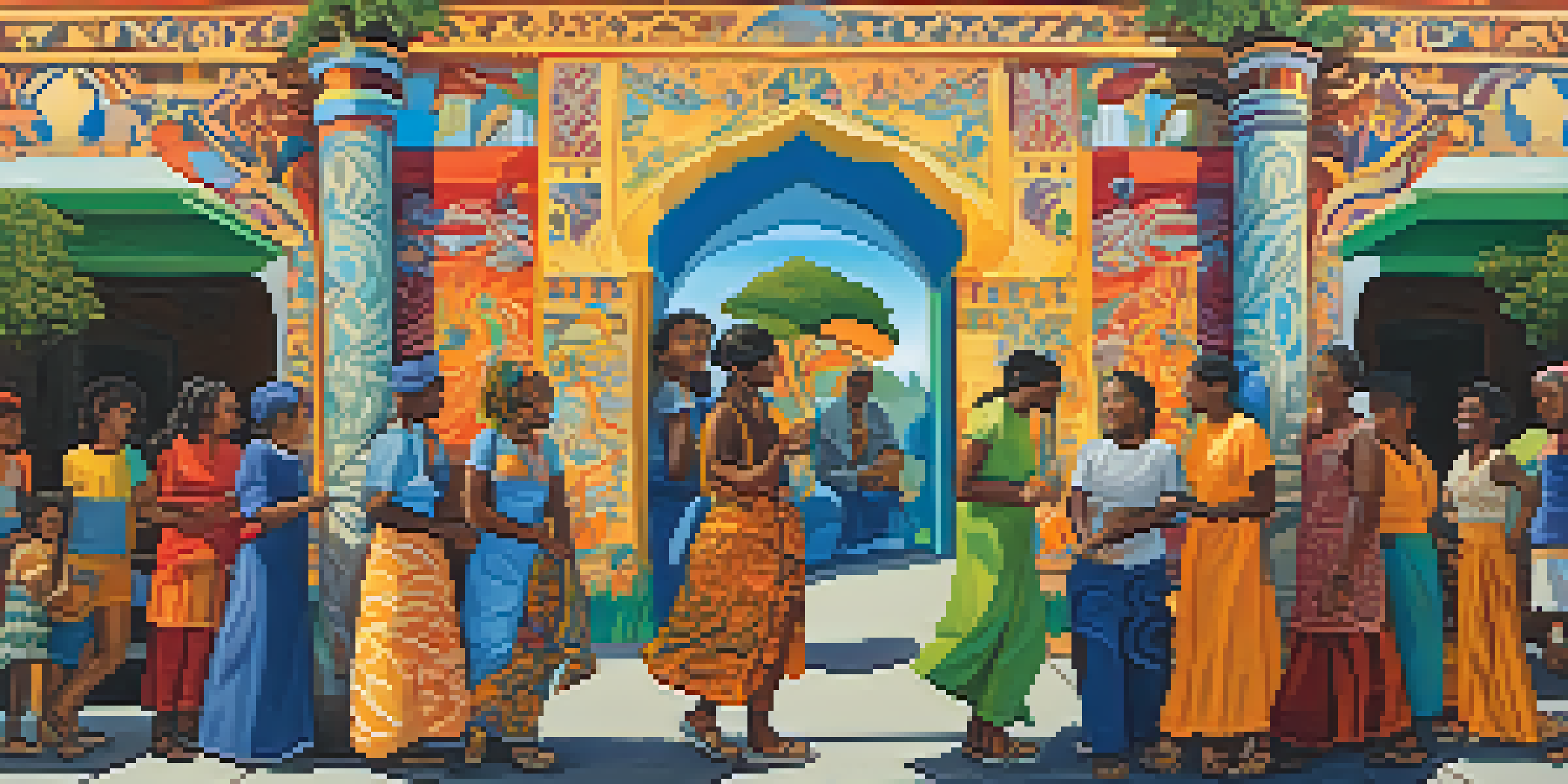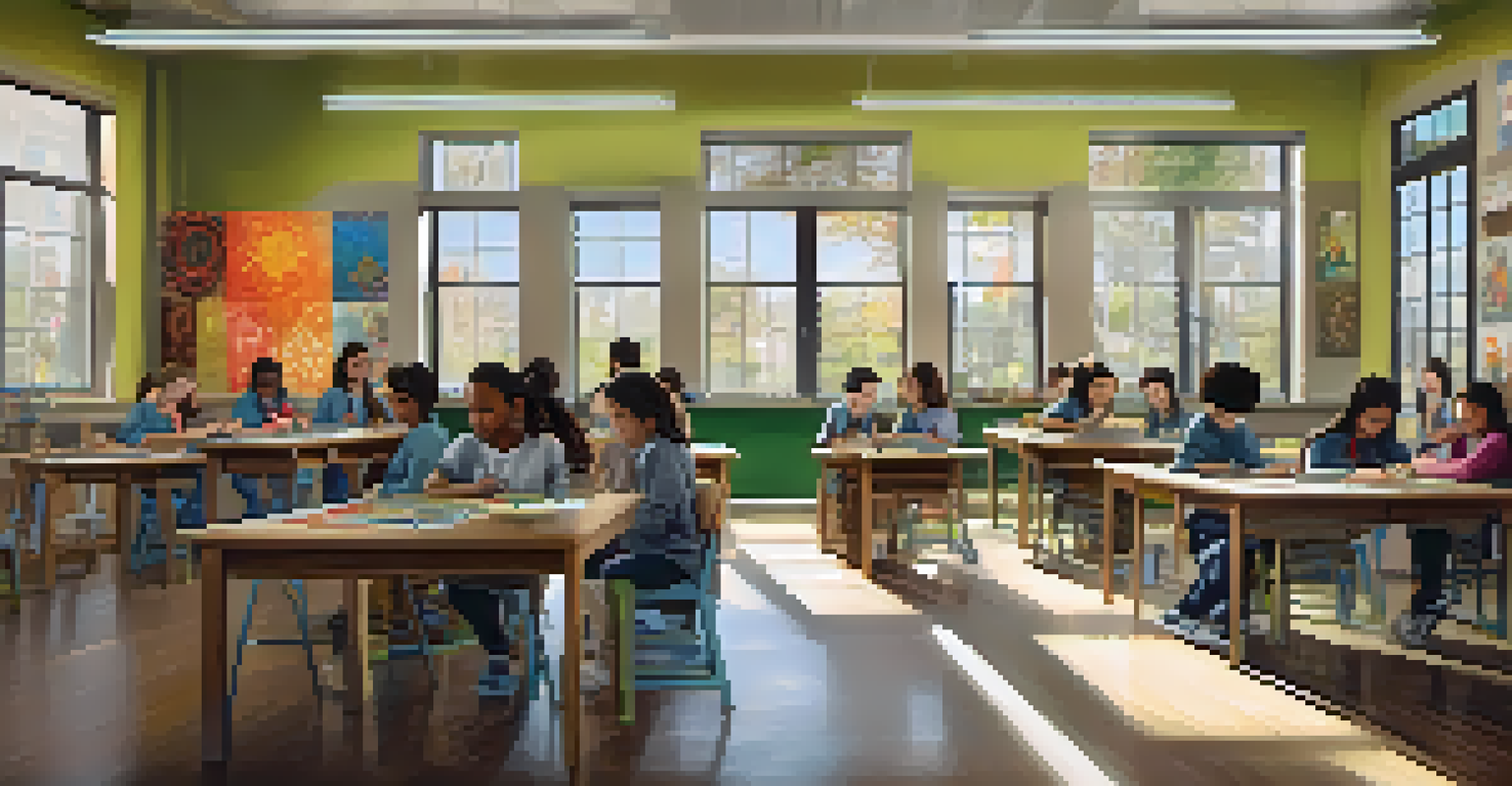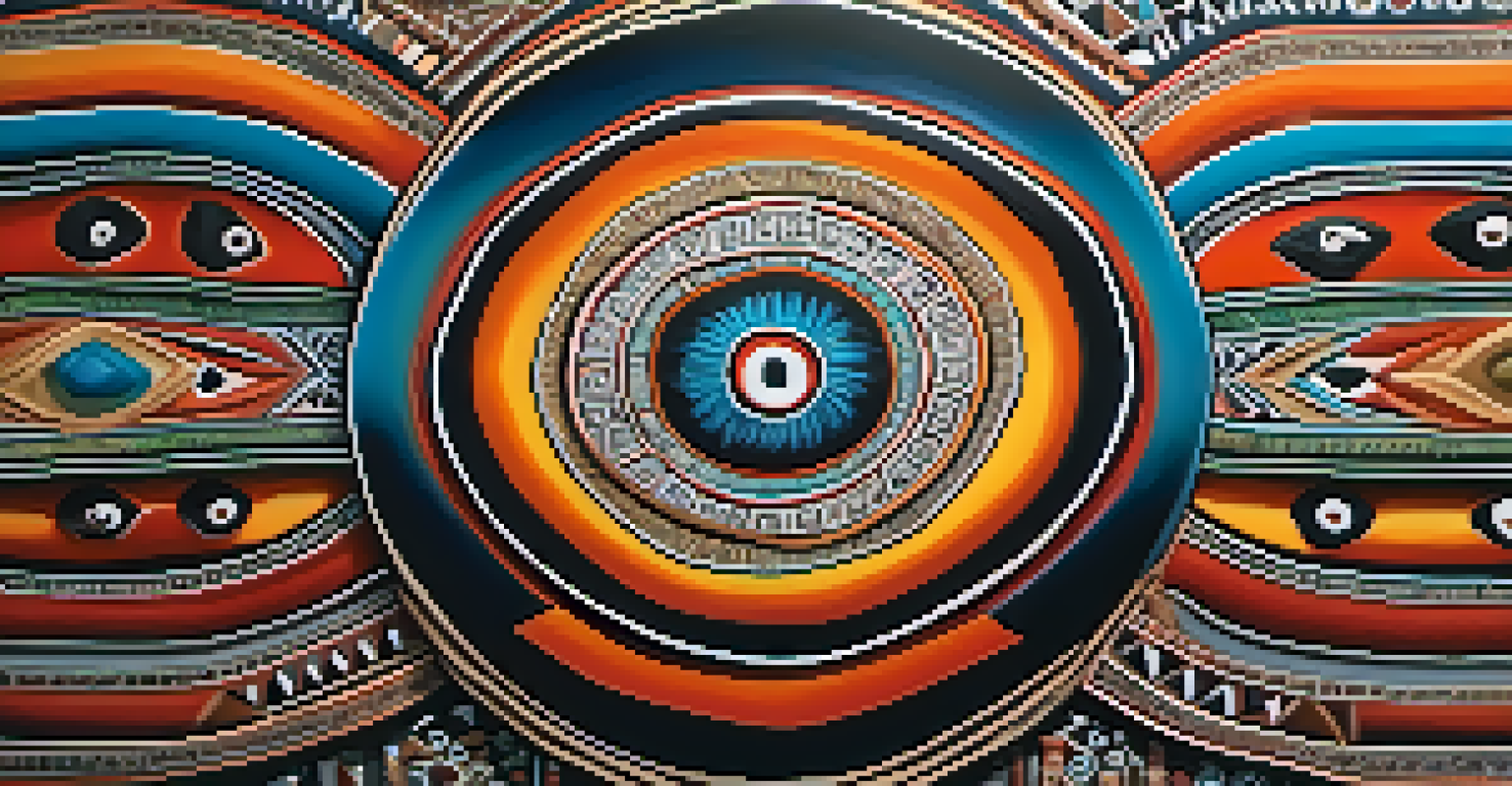Art as a Mirror: Exploring Cultural Identity Through Creativity

The Essence of Art as a Cultural Reflection
Art has always served as a window into the soul of a culture. It captures the values, beliefs, and struggles of a community, acting as a mirror that reflects their identity. From traditional paintings to modern digital creations, artists express their cultural narratives, allowing us to glimpse the world through their eyes.
Art is the most beautiful of all lies.
For instance, Indigenous art often incorporates symbols and stories that are deeply rooted in their history and relationship with the land. This not only preserves their cultural heritage but also educates outsiders about their unique experiences. Through these artistic expressions, we can better understand the complexities of various cultures.
Related Resource
In this sense, art becomes more than just a visual or auditory experience; it transforms into a powerful tool for cultural preservation and communication. By engaging with diverse artworks, we can foster empathy and appreciation, bridging the gaps between different cultural identities.
Cultural Identity: The Heart of Artistic Creation
Cultural identity is a multi-faceted concept that encompasses language, traditions, and shared history. Artists often draw from their cultural backgrounds, allowing their heritage to shape their creative process. This connection to cultural roots can inspire unique styles and themes, reflecting the artist's personal journey and collective identity.

Consider the vibrant colors and intricate patterns found in African textiles. These designs often tell stories, represent communal values, and celebrate heritage. By integrating these elements into their work, artists not only celebrate their identity but also invite others to understand and appreciate their culture.
Art Reflects Cultural Identity
Art serves as a mirror to culture, capturing its values and struggles through diverse expressions.
Ultimately, the relationship between art and cultural identity is reciprocal. As artists express their identities through creativity, they also influence and reshape cultural narratives, contributing to a dynamic dialogue within their communities and beyond.
Art as a Tool for Social Change and Identity
Art has long been a catalyst for social change, enabling artists to challenge norms and provoke thought. Through their work, they can address issues of injustice, inequality, and identity, sparking conversations that resonate with audiences. This ability to inspire change reinforces the idea that art is not only a reflection of culture but also a powerful agent for transformation.
Every artist dips his brush in his own soul, and paints his own nature into his pictures.
For example, the graffiti movement in urban areas often tackles themes of identity, belonging, and resistance. Artists use public spaces to express their thoughts on social issues, making their messages accessible to a wider audience. This public dialogue is crucial in shaping cultural identity and promoting awareness of the challenges faced by marginalized communities.
Related Resource
By leveraging art as a platform for advocacy, creators can amplify underrepresented voices and encourage collective action. This process not only enriches cultural identity but also fosters a sense of solidarity among diverse groups, leading to a more inclusive society.
Globalization: An Influence on Cultural Art Forms
In our interconnected world, globalization has significantly impacted cultural expressions in art. With the rise of digital platforms, artists can share their work with a global audience, leading to cross-cultural exchanges and collaborations. While this can foster appreciation for diverse art forms, it also raises questions about cultural appropriation and authenticity.
For instance, when traditional motifs from one culture are borrowed without context or understanding, it can dilute their significance. This highlights the importance of sensitivity and respect in the artistic community, ensuring that cultural identities are honored rather than exploited. Artists must navigate this delicate balance as they engage with global influences.
Art as a Tool for Change
Artists use their work to challenge social norms and inspire conversations about identity and justice.
Ultimately, globalization presents both opportunities and challenges for artists. While it can enhance visibility and foster creativity, it also necessitates a mindful approach to understanding and celebrating the diverse cultural identities that shape our world.
The Role of Art Institutions in Cultural Identity
Art institutions, such as galleries and museums, play a vital role in shaping our understanding of cultural identity. By curating exhibitions that showcase diverse artists and their work, these institutions can challenge dominant narratives and promote inclusivity. This curation not only fosters appreciation for various cultural expressions but also encourages dialogue about identity and representation.
For example, exhibitions that feature Indigenous artists help highlight their perspectives and contributions to the broader art world. By centering these voices, institutions can help combat stereotypes and misrepresentations while enriching the cultural landscape. This commitment to diversity is essential for fostering a deeper understanding of cultural identities.
Related Resource
In essence, art institutions serve as bridges between artists and audiences, facilitating conversations that transcend cultural boundaries. By prioritizing diverse narratives, they contribute to a more nuanced appreciation of the intricate tapestry of human experience.
Personal Identity and Artistic Expression
For many artists, their work is a deeply personal exploration of identity. Through creativity, they can process their experiences, emotions, and cultural backgrounds, translating them into visual or auditory forms. This journey of self-discovery allows artists to connect with their roots while also inviting others to share in their narrative.
Take, for instance, the work of Frida Kahlo, whose paintings often reflect her struggles with identity, gender, and culture. Her art serves as a powerful testament to her unique experiences, resonating with individuals who may share similar journeys. This personal connection to art can foster a sense of belonging and understanding among viewers.
Globalization Shapes Artistic Expression
Globalization facilitates cross-cultural exchanges in art while raising concerns about cultural appropriation.
Ultimately, the interplay between personal identity and artistic expression enriches the cultural tapestry. By sharing their stories through their work, artists not only affirm their identity but also create spaces for others to reflect on their own experiences.
Art Education: Nurturing Cultural Understanding
Art education plays a crucial role in fostering cultural understanding and appreciation. By exposing students to diverse artistic expressions and cultural histories, educators can help cultivate empathy and awareness. This foundation allows individuals to engage with art on a deeper level, recognizing its significance in reflecting and shaping cultural identity.
Programs that emphasize multicultural art education encourage students to explore their own cultural backgrounds while also appreciating others. This holistic approach helps dismantle stereotypes and promotes inclusivity within the artistic community. By nurturing a love for diverse art forms, we empower future generations to carry forward this legacy.

In conclusion, art education serves as a powerful tool for building bridges between cultures. By cultivating an understanding of the relationship between art and cultural identity, we can inspire individuals to celebrate diversity and contribute positively to the global artistic landscape.